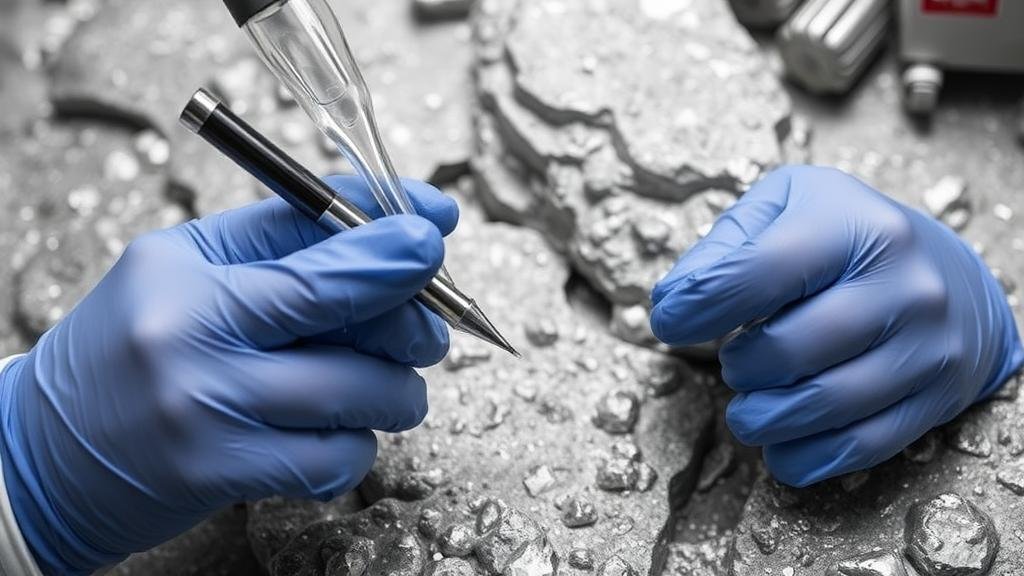Techniques for Extracting Silver From Polymetallic Carbonate Veins
Techniques for Extracting Silver From Polymetallic Carbonate Veins
Silver extraction from polymetallic carbonate veins is a multifaceted process influenced by various geological and technological factors. Polymetallic carbonate veins are rich in a combination of metals, including silver, lead, zinc, and copper. This article delves into the techniques utilized for extracting silver, the challenges faced, and best practices to optimize recovery rates.
Understanding Polymetallic Carbonate Veins
Polymetallic carbonate veins are mineral deposits primarily composed of carbonate minerals, often interspersed with sulfides and other minerals. Silver is typically present in association with other metals, making its extraction complex. Key minerals in these veins may include:
- Galena (lead)
- Sphalerite (zinc)
- Cerussite (lead carbonate)
- Smithsonite (zinc carbonate)
According to a 2021 study, these types of deposits can contain up to 50 grams per ton of silver, underscoring their economic potential in mining operations.
Extraction Techniques
The extraction of silver from polymetallic carbonate veins involves several methodologies, each suited to different ore characteristics and operational scales.
1. Gravity Separation
This technique leverages the differences in specific gravity between silver minerals and gangue materials. Gravity separation is particularly effective when high-grade silver is present. It employs methods such as:
- Panning
- Sluicing
- Jigging
For example, operations in the Patagonian region have successfully utilized gravity methods to isolate silver from gangue, achieving recoveries of up to 70% in certain ore types.
2. Flotation
Flotation is widely adopted for separating silver from its associated minerals. This process involves adding reagents to the ore slurry to selectively bind with silver-bearing minerals, allowing them to float and be collected. Common flotation reagents include:
- Xanthates for sulfide minerals
- Frothers to stabilize the froth
A case study at a mine in Australia demonstrated that optimizing flotation chemistry increased silver recovery rates by over 15% compared to traditional methods.
3. Cyanidation
Cyanidation is a hydrometallurgical process suitable for extracting silver from ores with low sulfide content. It involves leaching silver with a cyanide solution, converting it into a soluble complex. The steps include:
- Crushing and grinding the ore
- Leaching with cyanide
Despite the controversy surrounding cyanide’s environmental impact, this method remains effective; examples include operations in Mexico, where over 85% recovery was achieved from carbonate-rich silver ores.
4. Bioleaching
Bioleaching involves using microorganisms to extract metals from ores. This technique holds promise for environmentally sustainable mining practices. Specific bacteria can help solubilize silver from complex matrices, and pilot projects have shown recovery rates of about 55% in certain carbonate ores.
Challenges in Silver Extraction
Despite the availability of various extraction techniques, the process still faces challenges, including:
- Ore variability affecting recovery rates
- Environmental regulations on chemical usage
- Economic viability of extraction methods
As a result, careful evaluation of the ore is necessary to select the most effective extraction strategy, balancing both yield and environmental impacts.
Real-World Applications
Globally, regions such as the Americas, Europe, and Asia are engaged in silver extraction from polymetallic carbonate veins. In Canada, the Diavik mine has employed a combination of flotation and cyanidation techniques, resulting in successful silver recovery along with diamonds from the same site. Such integrated operations exemplify the potential for enhanced resource extraction.
Conclusion and Actionable Takeaways
Effective extraction of silver from polymetallic carbonate veins requires a comprehensive understanding of both the geological characteristics and applicable technological methods. Operators must:
- Conduct detailed ore analyses to optimize extraction techniques
- Evaluate the environmental implications of chosen methods
- Stay updated on advancements in technology, such as bioleaching, to improve recovery rates
By adopting these strategies, mining operations can enhance their profitability while minimizing their environmental footprint, supporting sustainable practices in the industry.



